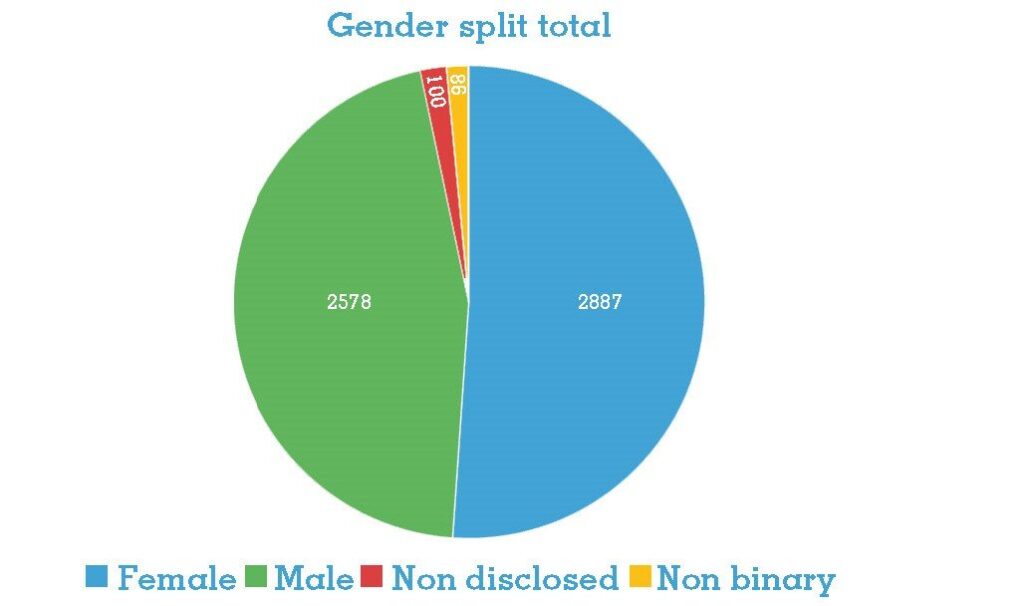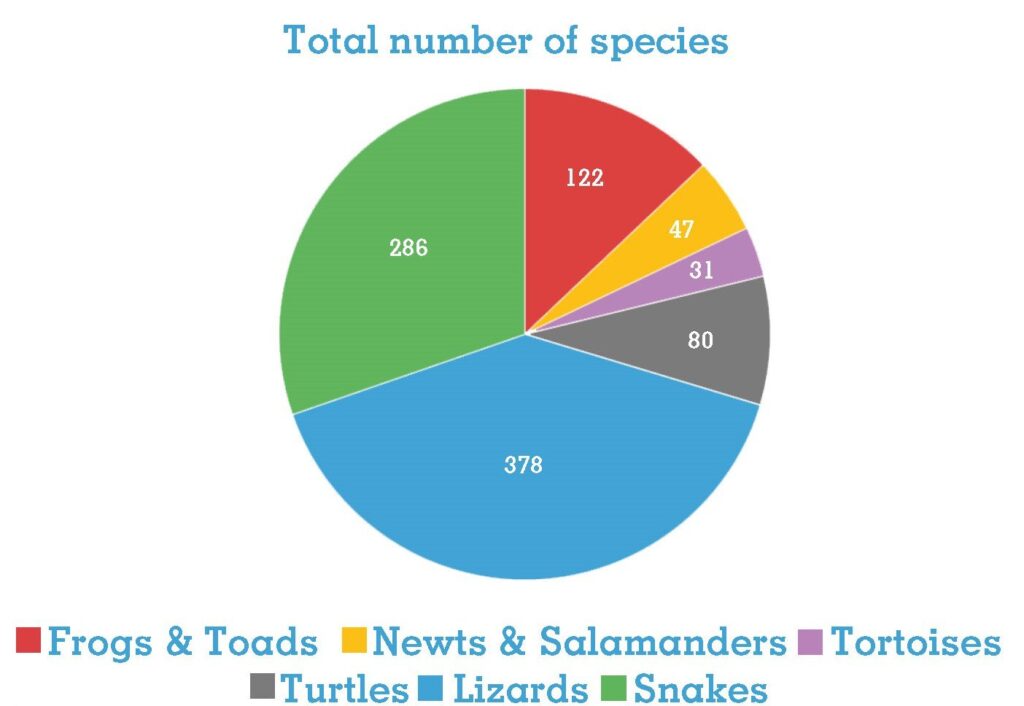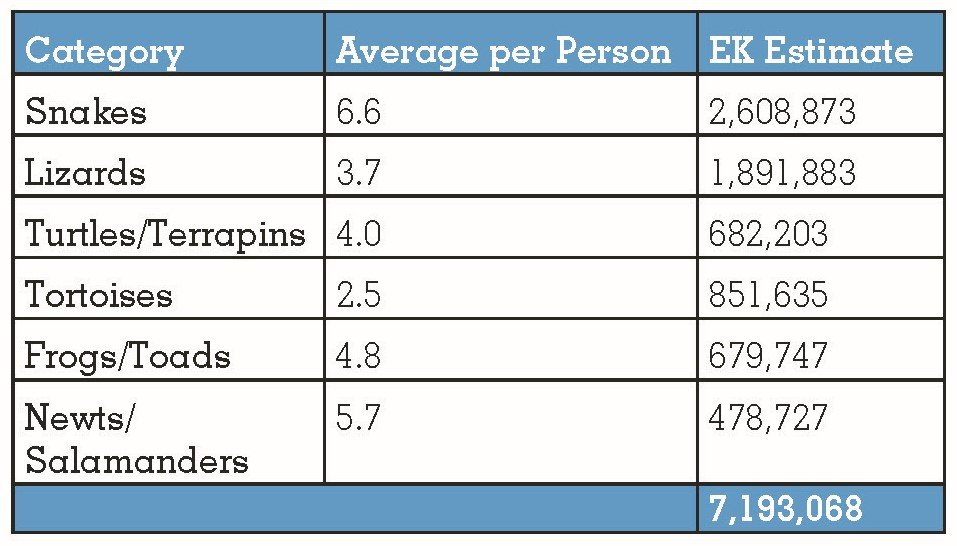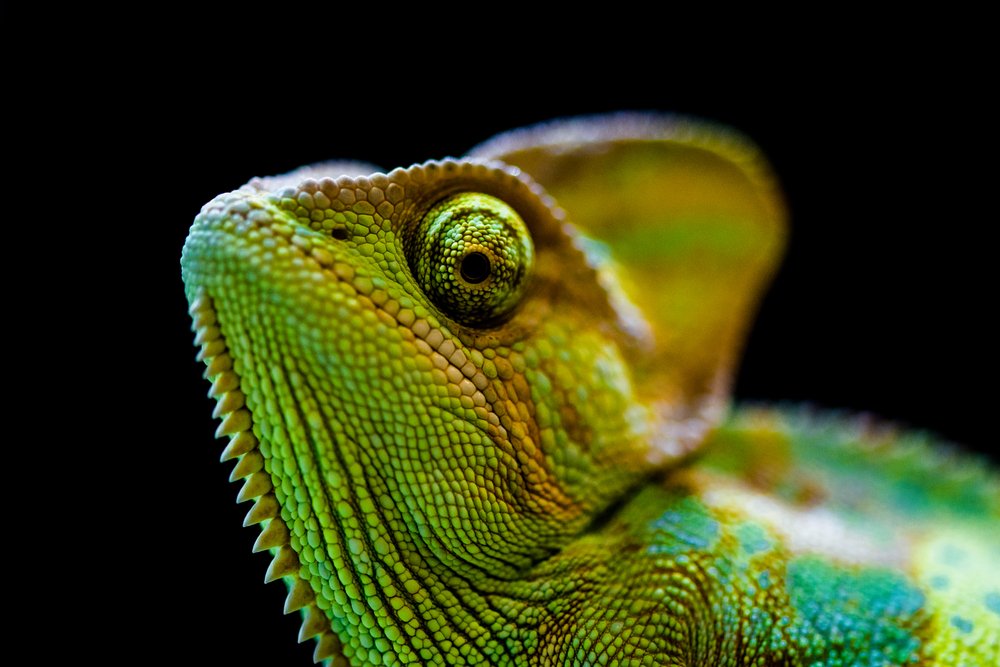In 2023, Exotics Keeper Magazine ran the largest-scale survey of exotic pet keepers to date. After creating a robust online platform with a drop-down menu of species and basic personal information questions, the team embarked on a mission to paint the most accurate picture possible of exotics keeping within the UK.
Why?
Animal welfare is underpinned not only by the knowledge and ability of the keeper but also by the systems surrounding them. Product development, industry stability, laws and regulations all have a direct influence on animal welfare standards. Recently, the concept of “positive lists” to regulate which species can and cannot be kept has come into serious consideration within UK and European political discussions. These lists can be to the detriment of animal welfare, forcing trade underground, preventing animals from receiving veterinary treatment and restricting access to reputable husbandry advice. Some parties believe this is a price that existing animals and keepers must pay to curb bad husbandry and unsustainable harvesting of wild animals. Others perceive it as an exercise in futility, a disaster for zoological study and an infringement on the freedoms of pet keepers because of personal ethics and opinions. However, both parties generally agree that we do not have enough information to make an educated proposal on how these animals should be kept.
Exotics Keeper Magazine set out to initially discover the scope of species being kept in the UK. By having a thorough list of species already kept in the UK, both parties (for and against positive lists) will be better informed to make the right decisions. However, Exotics Keeper Magazine discovered far more than the intended goal. We have learned about trends in species popularity, demographic representations of keepers and animal densities in different regions and have established a valuable means of communication to conduct further research into the hobby.
How?
The EK Survey was first opened to participants on the 15th of March 2023. It was promoted via three primary methods: social media, mailing list communications and reptile live food (insect) tub stickers. Before launch, we gathered support from leading figureheads within the industry including associated brands, groups, societies, and businesses. We made sure to work with a broad range of supporting organisations to reach a wide variety of keepers.
Several reptile shops also shared details of the survey to their own mailing lists and displayed in-store information on the survey. This, again, helped capture an unbiased group of reptile keepers.
The “sticker campaign” saw 800,000 stickers printed and attached to tubs of live foods, which were sent to stores and via live food delivery services. Alongside this, 40,000 stickers were attached to bags of naturalistic substrates (encompassing ProRep’s CrestieLife, TortoiseLife & SnakeLife) to reach more keepers).
We would regularly update social media channels with our survey results and tailored posts towards keepers of species that may be underrepresented within our broader outreach campaigns.
When assessing the traffic we received from various sources, we discovered that 51% of participants engaged with the survey via a QR code from a live food label, 29% from social media, 18% from email campaigns and 2% from other sources. Therefore, just over half of the data was collected from keepers that have at least one insectivorous species in their collection or visit a brick-and-mortar store where live foods are displayed.
Demographics
6,465 unique individuals filled out the survey from within the UK. Of those unique individuals, 5,652 kept reptiles and/or amphibians (the rest only kept invertebrates or other taxa). In total, we recorded 39,673 individual reptiles and amphibians representing 944 species being kept in the UK.
Amongst all participants, the most-represented gender was female (51%). This pattern was true for all groups of taxa except snakes, where males were most represented (49%) possibly because a greater percentage of non-binary and non-disclosed gender identities also kept snakes.
The most-represented age was 23. However, the “average” age of a survey participant was 34. Chelonia keepers are generally the oldest group of keepers, whilst lizard keepers represent the youngest group.
Snake keepers, on average, kept the greatest number of animals per keeper (6.6) whilst tortoise keepers were more likely to keep a single animal (with an average of 2.5 turtles or tortoises per keeper). Each other group averages between 3.7 and 5.7 animals per keeper.
Using a model created by the Pet Food Manufacturing Agency (PFMA) that adopts their data on the number of households with exotic pets multiplied by the average number of animals a keeper in the UK has, Exotics Keeper Magazine estimates that there are roughly 7.2 million reptiles and amphibians being kept in the UK. This estimation shows a stark difference from the estimated numbers of previous studies and has prompted data-sharing between EK and the Federation of British Herpetologists to critically assess these numbers.

Species data
Lizard keepers made up the highest number of participants (4,985 with some also keeping other taxa). 378 species were recorded from 18,658 animals. Of these, the top three most popular species, central bearded dragon (Pogona vitticeps), leopard gecko (Eublepharis macularius) and crested gecko (Correlophus ciliatus) made up 53.4% of total animals recorded. Mourning geckos (Lepidodactylus lugubris) also made up a large percentage of “total individuals” making them the 4th most “populous” pet lizard, but the 9th most popular amongst “individual keepers”. In all categories, there were disparities between the highest number of animals represented in the survey and the highest number of keepers representing those taxa.
Snakes were the second-most species-rich group in our data. We counted 1,995 keepers and 286 different species. Colubrids proved to be the most popular subcategory (1320 keepers), followed closely by pythons (1156 keepers). This shows that most snake keepers keep a range of species and supports our findings that the average snake keeper maintains over 6 different animals.
The survey also captured invertebrate species data. Invertebrates were the most diverse group of exotic pets with 489 different species recorded. The least diverse group was crocodilians, which comprised three species, dwarf caiman (Paleosuchus palpebrosus), American alligator (Alligator mississippiensis) and broad-snouted caiman (Caiman latirostris).
The most popular reptile kept in the UK, according to our data, is the bearded dragon (Pogona vitticeps) with 2,346 keepers maintaining the species. However, the most popular according to the number of individual animals, is the royal python (Python regius). Although our survey captured over 1,000 more bearded dragon keepers we found that royal python keepers kept, on average, 2.6 more individuals, than bearded dragon keepers kept. Both species are considered solitary animals, showing that royal python keepers are more likely to have a collection of animals as opposed to bearded dragon keepers.

Population Estimates
Using data collected by the PFMA, Exotics Keeper Magazine has been able to estimate the population of each species and their keepers in the UK.
Each Category or Sub-Category has a % of households who keep these animals based on the PMFA pet-keeping data. From here, we take the % of each category and multiply it by a total number of households in the PFMA data, just over 28 million.
Using the EK data, we know the percentage of the species by keeper, relative to the total number of keepers. For example, the Bearded Dragon is kept by 44% of all keepers based on those who entered the EK survey. So, we take the household data and multiply it by our species % to get the estimated keeper population. Finally, based on the average number of species per person, we multiply by the keeper population to bring us the total estimated animal population.
Exotics Keeper Magazine estimates that there are around 209,000 bearded dragon keepers in the UK. These keepers may keep an estimated 331,000 bearded dragons. The second most kept species, according to our population estimates would be the leopard gecko. Our data indicates that around 157,000 people keep leopard geckos in the UK, totalling over 300,000 animals.
With a lower percentage of households keeping snakes compared to lizards, royal pythons (the most populous species by number of animals in our survey) are estimated to be the third most popular reptile kept in the UK. Our data indicates around 298,000 royal pythons are kept in the country, by a comparatively modest 70,000 keepers.
Further critical assessment of these numbers would be required to fully determine their accuracy. Commonly kept species will be more likely to be represented in both EK and PFMA data, resulting in more accurate estimations. Whereas species that are less represented within both sets of data may suffer inaccurate predictions. For example, the PFMA data states that 0.3% of households keep salamanders, whereas 1.8% keep lizards. Using this formula, our results state there are 6,171 Madagascan ground geckos in the UK, but only 4,785 axolotls. This, in our opinion, may represent an anomaly. This may also be the result of a dynamic industry and highlights the necessity of studies such as the EK Survey.

A changing world
The data that we have collected could be interpreted in a myriad of ways. Without historical data it would be impossible to quantify trends exactly, however, there are several notable examples of widespread choices leading to more manageable welfare standards.
Broadly speaking, the data seems to show that dwarf varieties of most large constrictors, such as Boa imperator and island localities of Malayopython reticulatus are more popular than their larger cousins. Similar trends can be seen with lizards. Green iguanas are now far less popular than they once were, whereas crested geckos and ackies monitors are kept in good numbers.
Musk turtles are the most-kept species of turtle according to our results. They typically grow to a fraction of the size of red-eared and yellow-bellied sliders that were once the most popular pet turtles in Britain. These two subspecies of Trachemys scripta were banned in the UK in 2016. Yet, the yellow-bellied slider remains the second most popular species in terms of number of animals kept (82). The National Centre for Reptile Welfare data shows that sliders present a major problem, as their “illegal” status prevents them from being rehomed. Our data shows that turtle keepers are also amongst the oldest demographic of exotic pet keepers and may be more likely to needto rehome their animals. This could provide a compelling case for re-assessing how we address invasive species.
The full report
Exotics Keeper Magazine is currently working on developing a more detailed report for publication. We hope that the data can be used to develop a universal understanding of exotic pet keeping in the UK and perhaps encourage similar projects in other countries.
Please visit https://exoticskeeper.com/eksurveyreport for updates on the full report.
